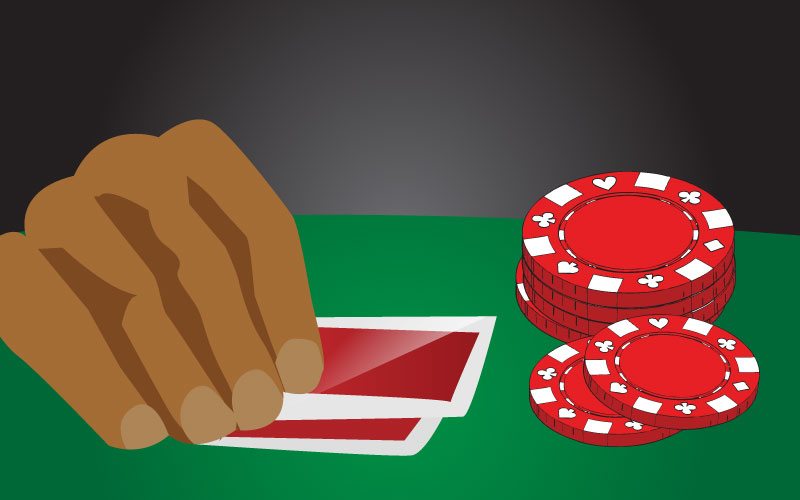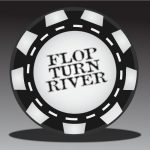Poker tells are one of the most important aspects of poker, however they are often deemed less important than the math involved. While playing, it is crucial to observe your opponents in order to get clues as to the cards they are holding or the actions they may take. Even when not involved in a hand, you should be observing your opponents to see if you can identify any kind of behavioral tell that relates to cards, actions, or even emotions. You can also try to guess their poker hands before the showdown, and as you become better, you will start to become more accurate.
Betting, obviously, reveals the most information and is the most important tell when playing online poker. However, there are some common online poker tells that players have found, which you can read here – Online Timing Tells.
In a live poker game, however, betting is only part of the equation. Some players give a way a lot of information through poker tells. You need to focus in on the players while playing, so don’t turn away and watch the TV, you will be missing out on a lot of information! Live poker often becomes a race of who can find their opponents’ tells first. One of the most common tell to look for is betting poker tells. This includes how they bet, how much they bet, and how they act while betting.
A tell is a sign that reveals information about the cards held by your opponents. There are certain poker tells that are universal and others that are unique. For example, a universal poker tell is that the heartbeat increases when holding good hole cards. A unique tell is something like whistling. Player A might whistle when he has good cards whereas Player B might whistle when he has bad cards. Obviously the players who can pick up on tells and not give away any of their own have a big advantage in the long run. Tells can vary from player to player, which is why observing is so important. If you noticed a player covering his mouth while betting and showed a bluff, the next time you can see if his posture is the same while involved in a pot with you.
We’ve compiled and summarized a vast amount of information on the subject of poker tells. Read our brief overview below, and then check out our links below for all our poker tells articles!
And if you’d like to discuss poker tells or other issues on player psychology, visit our Live Poker forum!
How T.J. Cloutier Spots Poker Tells
In “Championship No-Limit and Pot-Limit Hold’em”, T.J. Cloutier reveals that everyone has tells.
We’ve watched all the really good players over the years–and every one of them has a tell.
Even legendary players like Phil Hellmuth, John Bonetti, Stu Ungar, Doyle Brunson.
If you observe enough and watch them play hands for long enough,
you’ll find that they all have a certain tell when they have a really big hand versus just a hand.
Of course, the top players don’t show tells very often, but they do do it.
And that’s pretty true of everybody else in poker, too. [28]
T.J. Cloutier brags about his ability to pick up on tells throughout his book.
You’re either born with it or you aren’t. I have a knack for picking up people’s tells
and all the little things that they do. Caro has a book on tells, but I have my own book. [283-284]
Unlike many players, T.J. Cloutier looks at his cards early. He feels that this lets him focus on his opponents from that point on. I remember watching him do this in a hand against Phil Hellmuth. He was so focused on Phil that he didn’t realize he got a flush on the river. Part of observation is keeping your eyes on your opponents, not your cards.
I always look at my hand quickly. If you look at your hand before the action comes to you,
you can never see whether anything is going on behind you. If you wait until the action gets to you to look at your hand,
you will miss a lot of things.
Look at your hand as soon as you get both of your cards so that you can observe the things
that other players are doing when they get their cards:
– Little twitches they make when they have a hand
– Whether they slip their cards back under their chips
– Whether they are loading up, getting their chips ready to bet. [121]
How Dutch Boyd Spots Poker Tells
Dutch Boyd likes to analyze each player individually and get information specific to each person.
With tells, what you have to do is get a line on each player. Each player will exhibit different tells. Look for a difference in the way they play two hands… ANY difference. If you spot a difference that is consistent, it’s a tell.
He goes on to explain that once you spot unusual behavior you can map that to the cards to determine if the tell is one of strength or one of weakness.
It’s going to be different for each player, but once you spot a difference in the way they play, you’ve got them. Then you just look to see him turn over a hand. You correlate the strength of what they show to the behavior variance and you’ve got yourself a tell.
How Mike Caro Spots Poker Tells
Unlike T.J. Cloutier and Dutch Boyd, Mike Caro expresses that there are certain elements of human behavior that apply to all players. He devotes the first part of his Caro’s Book of Tells analysis to these situations. Caro breaks the book up into two sections, natural tells and acting tells. His Great Law of Tells defines these situations.
Players are either acting or they aren’t. If they are acting, then decide what they want you to do and disappoint them. [12]
The first 130 pages of the book looks at situations where players are not acting. The rest of the book involves cases where opponents are acting.
Caro helps the reader determine when an opponent is acting and when an opponent is exhibiting a tell subconsciously.
A Personal Example of Spotting a Poker Tell
There are a few poker tells that I’ve witnessed across several players on several different occasions. One amateur poker tell is to hit the flop big, yet force a sigh, mumble a curse word (that’s meant to be heard), or some other ridiculously poor acting job, and then to bet on the flop. To Mike Caro’s point, acting is an important factor in tells. These examples above would be false tells, obviously over-acted by an amateur player. The fake sigh, or faking disappointment, demonstrates that the opponent wants you to think he is weak, so when they bet, they want you to bite. So, act opposite to what they want if you don’t have the cards to win, and fold out.
That’s an example of a common, more generic tell, but I really try to hone in on actions specific to the player. It helps to know the player somewhat, I played in a NL home game this weekend (08/15/04), and had a couple of interesting hands against the same player, which may help demonstrate utilizing poker tells during a game.
First hand: My opponent was to my left. I’m in middle position. Blinds are $1-2, I think maybe there’s one caller before it got to me, I raise the bet to $10 on my JJ. Opponent to my left calls, everyone else folds.
Flop comes Q 7 2 rainbow. I bet $15, my opponent raises me all-in $72.
So, I’m lookin at him, he’s quiet, staring at the cards. This, in itself, doesn’t mean much. I start asking him questions about why he wants one of us to go broke…no answer…I know that he’s been drinking a lot. I asked him if that was his empty beer next to him… he answered that one.
Then I start staring at the pot, counting out my chips, I notice from the corner of my eye that he squirms a tiny bit and takes a slightly deeper breath (not acting). I interpret these signs to mean that he is uncomfortable with my consideration of calling his bet. This poker tell is the final piece of information that swayed me to make my decision.
I call his bet, he flips over 55, I win the pot.
Now, this is where it gets interesting. Same opponent to my left, I’m the big blind, he opens raising the bet to $6. One caller (I think), then it’s on me, I have the same hand JJ. I raise the bet to $15. Same opponent goes all-in, raises over $70 again. Everyone else folds. It’s my decision again, basically same scenario but pre-flop.
But this time, my opponent’s acting differently. He’s more vocal, more natural and confident (not acting, in my opinion)… I take my time, he doesn’t fidget. I show my cards, JJ, and fold. He flips over QQ.
So, in general terms, strong may be weak, weak may be strong (and are they acting?), but really you want to notice a change in a particular player’s actions. In this case, strong was strong, but the important factor was being able to see the first hand played out and tie his actions to a weak hand. Now, I knew his actions were different, and his hand was different. We took a break after that hand, I went out for a smoke, one of the players was complementing me on that laydown, he asked me how I knew, I responded with “Did you see the difference?” (I meant in my opponents actions).
I’m not sure he did, but I did, and it saved me a lot of money.
Poker Tells - Top/Most Common Poker Tells!
Average rating: 0 reviews










